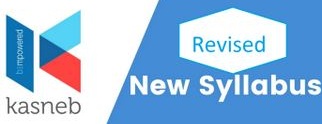Mr. A, a car dealer sells second hand cars. On Thursday last week, he placed an advertisement in a daily newspaper which stated the following:
“Once in a lifetime, opportunity to own a one year old Nissan Caravan, low mileage, Kshs.500,000 cash. The offer is valid for only one day and the car will go to the first person who accepts it.”
When Mr. B saw the advertisement, he immediately posted a letter of acceptance of Mr. A‟s offer.
Mrs. C also saw the advertisement and came to inspect the car after which Mrs. C offered Mr. A a cheque of Kshs. 500,000. However, Mr. A refused to accept the cheque stating that another potential buyer had already offered to buy the car.
Later in the day Ms D, another interested buyer telephoned Mr. A informing him that she was willing to buy the car but asked Mr. A if he would keep the offer open until she could go to her bank to obtain a loan. Mr. A accepted the request. However later, in the day, Mr. E, another potential buyer said that he would pay Sh. 600,000 in cash for the car. Mr. A agreed to sell the car to Mr. E.
On Monday morning, Mr. A received Mr. B‟s letter of acceptance. At the same time, Mr. E returned to complete the transaction. However, in the afternoon Mr. E telephoned Mr. A to say that he had second thoughts and he no longer wished to purchase the car.
Citing relevant decided cases where applicable, explain the legal principles in the case in relation to:
(a) Mr. A (4 marks)
(b) Mr. B (4 marks)
(c) Mrs. C (4 marks)
(d) Ms. D (4 marks)
(e) Mr. E (4 marks)
ANSWER
(a) The advertisement A is an invitation to treat. A is simply inviting would be buyers of the motor vehicle to make an offer to buy the same at that price which offer A may accept or reject. This position is consistent with a sale display where a seller displays goods with cash price tags. The prospective buyer makes the offer.
This reasoning is consistent with the decision in Fisher V. Bell.
(b) Though acceptance is an integral part of a contract, in this case there was no acceptance as Bs letter was merely an offer to A to take the car at that price. In any event, there is no express or implied intimation A that anything be communicated post.
(c) There is no contractual relationship between C and A on account that after he had inspected the car and satisfied himself that it was accepted to him, C made all offer to take it at Kshs. 500,000 but the offer was rejected. This effectively terminated Cs offer to A.
(d) There is no contractual relationship between D and A. Since D did not even make an offer to buy the motor vehicle. The fact that A agreed to her request to go to the bank cannot render A liable.
(e) There is a contractual relationship between A and E. This is because A accepted Es offer to take the car at Kshs. 600,000. This created a legal obligation on the part of E to take the car. His change of mind amounts to a breach of contract for which he is liable in damages A is therefore entitled to sue E. This position is consistent with the decision in Byrne V. VanTienhoven where the offeror purported to revoke the offer after it had been accepted the offeree.
